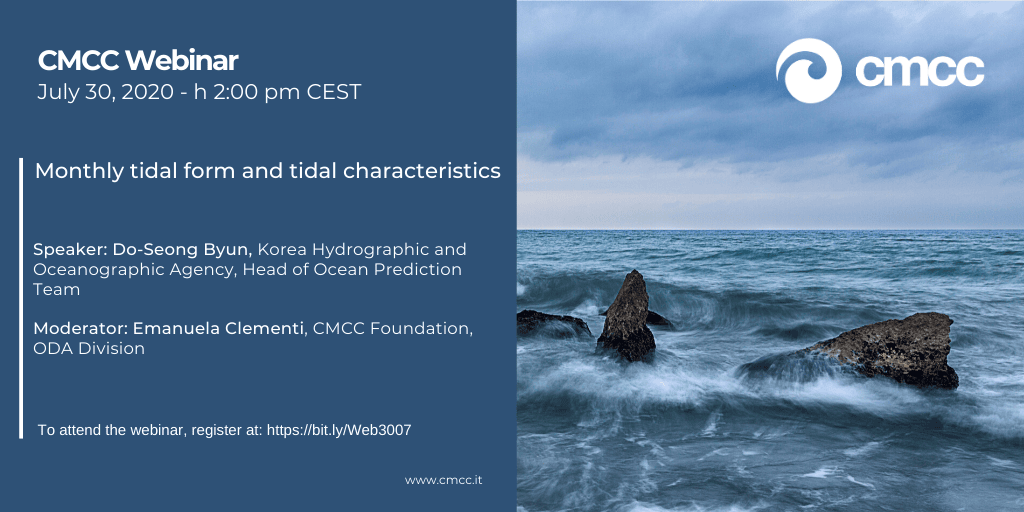CMCC Webinar | 30 July, 2020 h. 2:00 PM – 3:00 PM CEST
Speaker: Dr. Do-seong Byun, Korea Hydrographic and Oceanographic Agency, Head of Ocean Prediction Team, Seul, Korea
Moderator: Emanuela Clementi, CMCC Foundation, ODA Division
Abstract
In a world of increasing coastal inundation hazard, an understanding of daily through to monthly tidal range patterns is fundamental to resilient coastal management and development practices. In particular, an understanding of fortnightly and monthly tidal envelope characteristic in a tidally-dominated regime can be useful for planning how to mitigate potential inundation events in the mid- to long-term. In this study, we developed a new approach for not only predicting tidal envelope but also evaluating quantitatively the characteristics based on reference outlines which are the potential maximum upper (PMUTE) and minimum lower tidal envelopes (PMLTE) generated by tidal modulated amplitudes. The forms of tidal envelope characteristic (TEC) can be classified by the closeness of the upper (lower) tidal envelope to PMUTE (PMLTE): high water envelope (HWE), HWE dominance, low water envelope (LWE), LWE dominance and equally mixed. Based on a complete tidal species modulation (CTSM) technique suggested by Byun and Hart (2015), the PMUTE (PMLTE) and the entire tidal envelope characteristic factor (ETECF) varying from +1 to -1 were calculated for four tidal stations (Incheon, Ieodo ORS and Dokdo in Korea and Cape Robert in Antarctica) with four different tidal regimes (semi-diurnal, mixed semi-diurnal, mixed diurnal, and diurnal). The maximum (UPETECF) and minimum (LWETECF) values extracted from ETECF for each tidal cycle were used to quantitatively evaluate a TEC form and, ultimately to predict tidal envelope. Throughout comparisons between two means of UPETECF and LWETECF and between the maximum and minimum values of ±1 and the means, TEC forms were identified as HWE dominance for Incheon, Ieodo ORS and Cape Roberts and LWE dominance for Dokdo. The results were consistent with those of the relationship of phase lags between three main constituents (K1, O1, M2) which can be used to qualitatively evaluate TEC forms. In conclusion, the experiment results showed that the CTSM technique can be used to evaluate quantitatively tidal envelope characteristic type as well as to appropriately predict tidal envelope.
Working language: English
Watch the video:
HOW TO PARTICIPATE
The webinar will be broadcasted via Go-to-Webinar.
Please, click on the following link for registration:
https://register.gotowebinar.com/register/7956625098586531855
After registering, you will receive a confirmation email containing information about joining the webinar.
Organized by
CMCC Foundation – Euro-Mediterranean Centre on Climate Change


